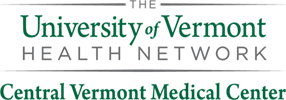Am I able to wear deodorant for my mammography exam?
No. It is important to wash off any deodorant, powder, or lotion before having your mammogram. These products sometimes contain metallic particles that can interfere with the results of the mammogram.
How often should I get a mammogram?
At Central Vermont Medical Center we follow the American College of Radiology’s recommendation of a yearly mammogram beginning at age 40, and most health insurances cover this frequency. Not all health organizations agree with this traditional guideline. The American Cancer Society, the US Preventative Services Task Force, and some other advocacy organizations have different recommendations. Your health care provider can help you make a decision that is right for you.
What are the risk factors for breast cancer?
The most prevalent risk factors include gender, race, ethnicity, advancing age, and family history of breast cancer. Other factors such as use of hormones, menopausal age, and genetics can also play a role in the risk for breast cancer.
Is my mammogram done digitally?
Yes. Here at CVMC we have full-field digital mammography (FFDM). We also utilize CAD (computer aided detection) on every mammogram. CAD is a computer-based process designed to analyze mammogram images; in effect, it is a "second pair of eyes" for the radiologist.
We also offer 3D/Tomosynthesis Digital Mammography as well. Currently our standard of care is to provide you with the most effective imaging; therefore we perform 3D/Tomosynthesis exams unless otherwise notified by the patient.
Do you offer 3D/Tomosynthesis Mammography ?
Yes. At CVMC our standard of care is to provide you with the most effective imaging; we perform 3D/Tomosynthesis exams unless otherwise specified by the patient. Currently not all insurance companies are fully covering the 3D/Tomosynthesis imaging and can leave you with about a $210.00 out of pocket charge.
What is 3D/Tomosynthesis Imaging?
3D mammography, also known as tomosynthesis, is a revolutionary new screening and diagnostic tool designed for early breast cancer detection that can be done in conjunction with a traditional 2D digital mammogram.
During the 3D part of the exam, the X-ray arm sweeps in a slight arc over your breast, taking multiple breast images. Then, a computer produces a 3D image of your breast tissue in one millimeter sections, providing greater visibility for the radiologist to see breast detail in a way never before possible. They can scroll through images of your entire breast like pages of a book.
The additional 3D images make it possible for a radiologist to gain a better understanding of your breast tissue during screening and the confidence to reduce the need for follow-up imaging.
What are the benefits to 3D Tomosynthesis Breast Imaging?
With conventional digital mammography, the radiologist is viewing all the complexities of your breast tissue in one flat image. Sometimes breast tissue can overlap, giving the illusion of normal breast tissue looking like an abnormal area.
By looking at the breast tissue in one millimeter slices, the radiologist can provide a more confident assessment. In this way, 3D mammography finds cancers missed with conventional 2D mammography. It also means there is less chance your doctor will call you back later for a “second look,” because now they can see breast tissue more clearly.
What does it mean to get called back?
When a patient is called back for additional imaging, it is because the radiologist needs to look at an area in more detail. It does not mean you have cancer! The majority of the time, the additional imaging proves the area to be normal tissue.
What is the percentage of “call backs” at CVMC?
Each year 10-12% of patients having a mammogram will be called back. This percentage is in line with the national standard.
When will I get my results?
The Radiologist will read your mammogram within 24 hours. If no additional imaging is needed, a ‘normal result’ letter will be mailed to you within 10-14 days. The health care provider who ordered your mammogram will receive a report within 2-3 business days.
If additional imaging is needed, the mammography staff will call you within 2 business days. An ‘additional imaging needed’ result letter will also be mailed to you within 10-14 days. The health care provider who ordered your mammogram will receive a report within 2-3 business days.
Why do I have to fill out the same paperwork each time I have a mammogram?
This is necessary to ensure our records are current and that no changes took place in your personal or family history in the past year. The information about menstrual periods and ethnicity do not need to be filled out each year if you are post-menopausal, as this is information that would not change.
Are call back examinations (both mammography and ultrasound) covered under my insurance?
Call back examinations (both mammography and ultrasound) are considered Diagnostic exams, and are not always paid in full by your insurance. Medicare and Medicaid both cover diagnostic exams, while other insurance carriers may put these charges toward your deductible. We will bill your insurance first and then send you a bill for the balance.
If paying would be a hardship, please call Diane Jones, our Patient Navigator, at 802-225-5449.

